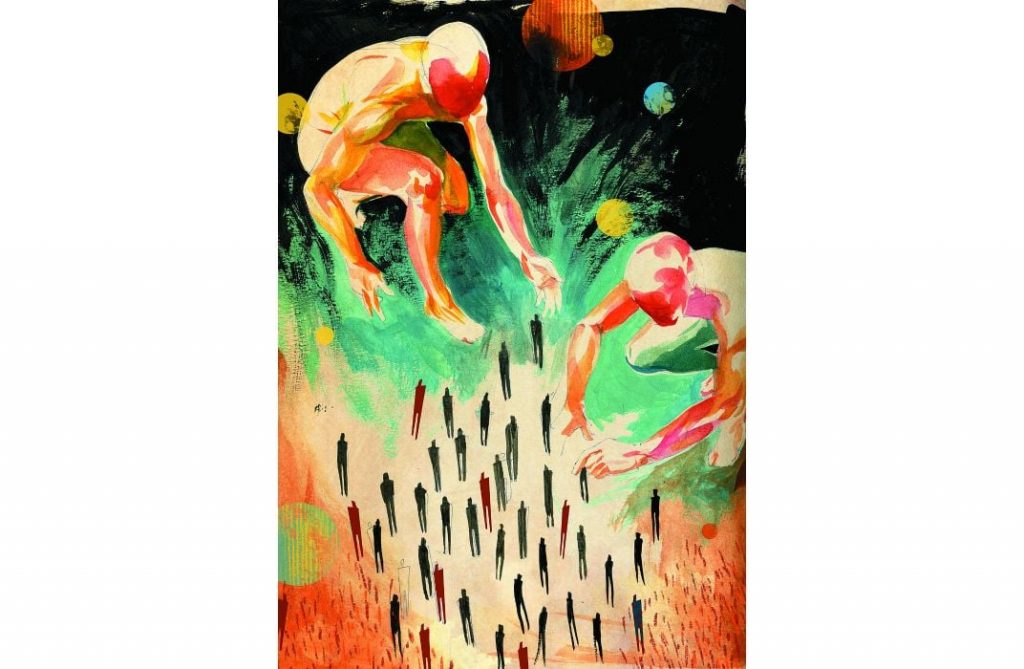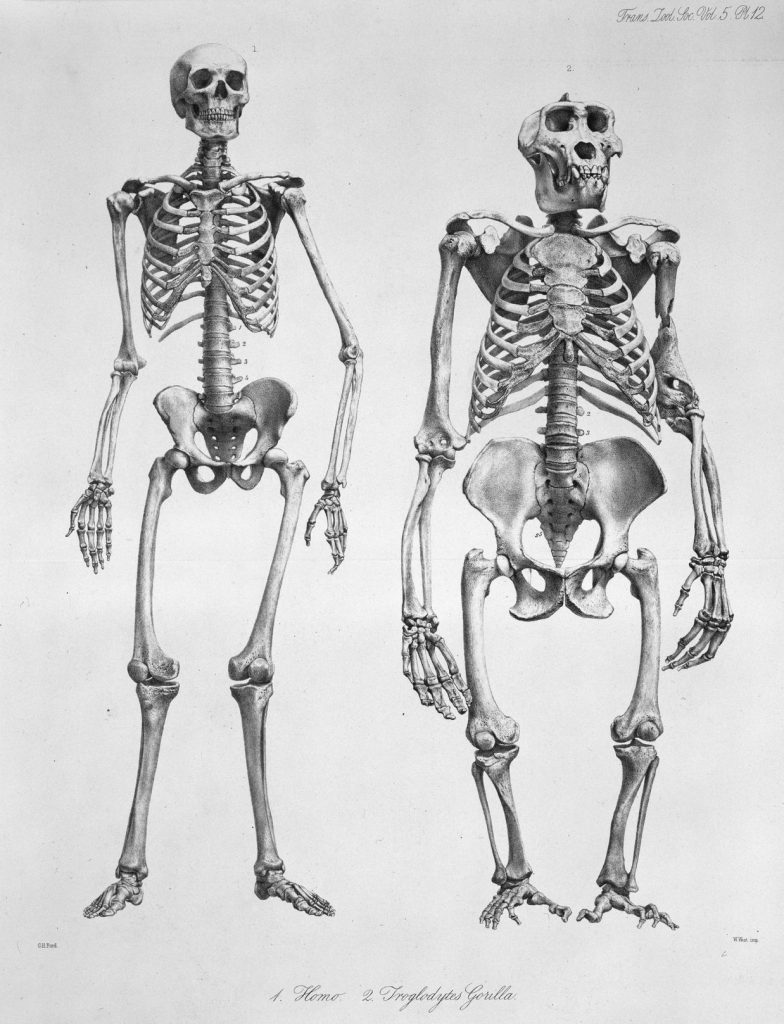
Those of us living in a ‘post Darwin’ world may find it hard to understand that human beings didn’t spot the similarities between themselves and apes a lot earlier.
But our recent ancestors didn’t see any likeness between humans and animals, and certainly since humans started writing things down around 5,500 years ago, the absolute consensus has been that we arrived fully formed just as we see ourselves today.
Just as over the millennia clay has formed the basis of human building materials, many origin stories also start with clay or mud. Agricultural societies generally need rivers and rivers often have what are called ‘alluvial deposits’ of clay. The Shilluk peoples who today live in Sudan on the west bank of the Nile hold that Juok the Creator moulded the Sudanese from black clay and Egyptians from reddish brown clay:
Mud, Mud, Glorious Mud…
Five thousand years ago, Egyptians, especially the ones living in the South, also believed that humans were created from mud by a potter-god, Khnum, though further North, the dominant belief had the god Atum-Ra created himself and then other gods, and humanity was created from the tears of Atun-Ra.
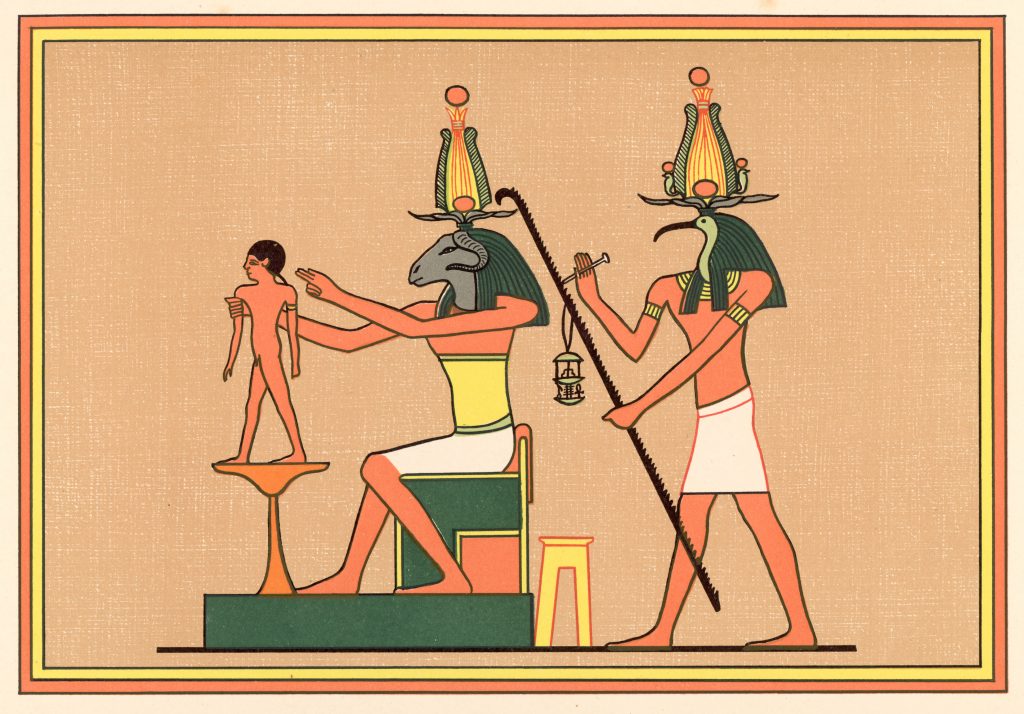
Islamic versions of the creation of Adam feature clay as do some Jewish commentaries such as those of the first century scholar, Flavius Josephus. At the same time as the emergence of Egyptian creation myths and early Judeo biblical versions of creation, in Mesopotamia a Babylonian holy book, the Enuma Elish, tells of a huge struggle between the gods in which Marduk, son of Ea/Enki, is victorious and becomes Supreme god. He creates a house to be a luxurious dwelling for himself and resting place for the gods, “Ba-ab-i-li”, and then he (or his father) creates man from the blood of Qingu, who was on the losing side in the war of the gods, to serve the gods with labour and offerings, so that they can be at leisure. Another Babylonian story, the Atrahasis Epic, again tells of clay being the base material for mankind’s creation with the divine blood added to give life to the clay under Ea’s guidance.
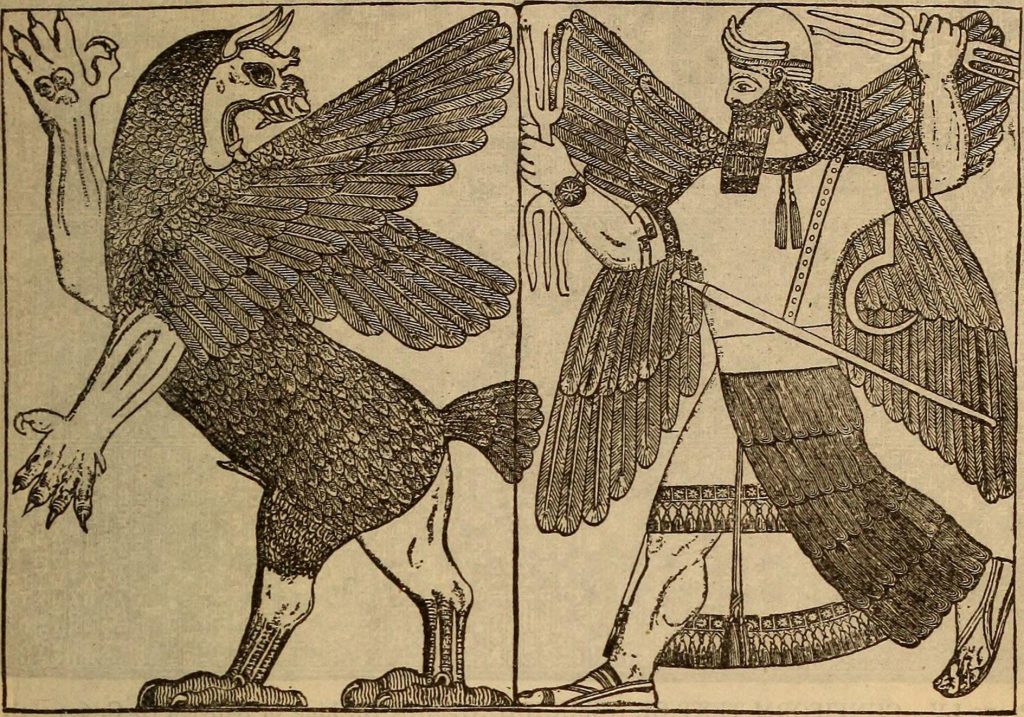
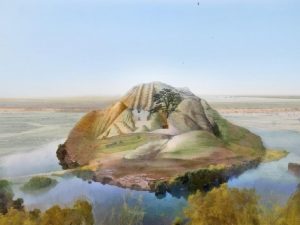
In Syria, at the Sumerian site of Eridu, considered to be the oldest ‘city’ in the world, there is evidence of the worship of Ea dating back some 7,500 years so there’s every likelihood that these stories represent a much more ancient oral tradition of attempts to explain human origins.
The Old Testament in the Bible tells stories of the struggles between the Philistines and King David of Israel. This was part of a collapse of several cultures around the Mediterranean at the end of the Bronze Age some 3,300 years ago arising from a mass migration of the ‘Sea People’ as the Egyptians called them. Among the civilisations ravaged by the Sea People was the Mycenaean world on mainland Greece whose myths and legends have connections with both the earlier Minoans and the later Classical Greeks and on through them to the Romans…
It is from the writings of Hesiod, a Greek poet who lived around 700 BC, we know that in classical Greek mythology, Zeus, the highest of the gods, having created the Earth, saw it lacked two things: man and animals. Zeus delegated the creation of each respectively to his sons Prometheus (“fore-thought”) and Epimetheus (“after-thought”). According to Hesiod, in a story largely adopted by the Romans (though with Jupiter in the role of Zeus), Prometheus formed men from clay in the image of the gods while Epimetheus worked on the animals.
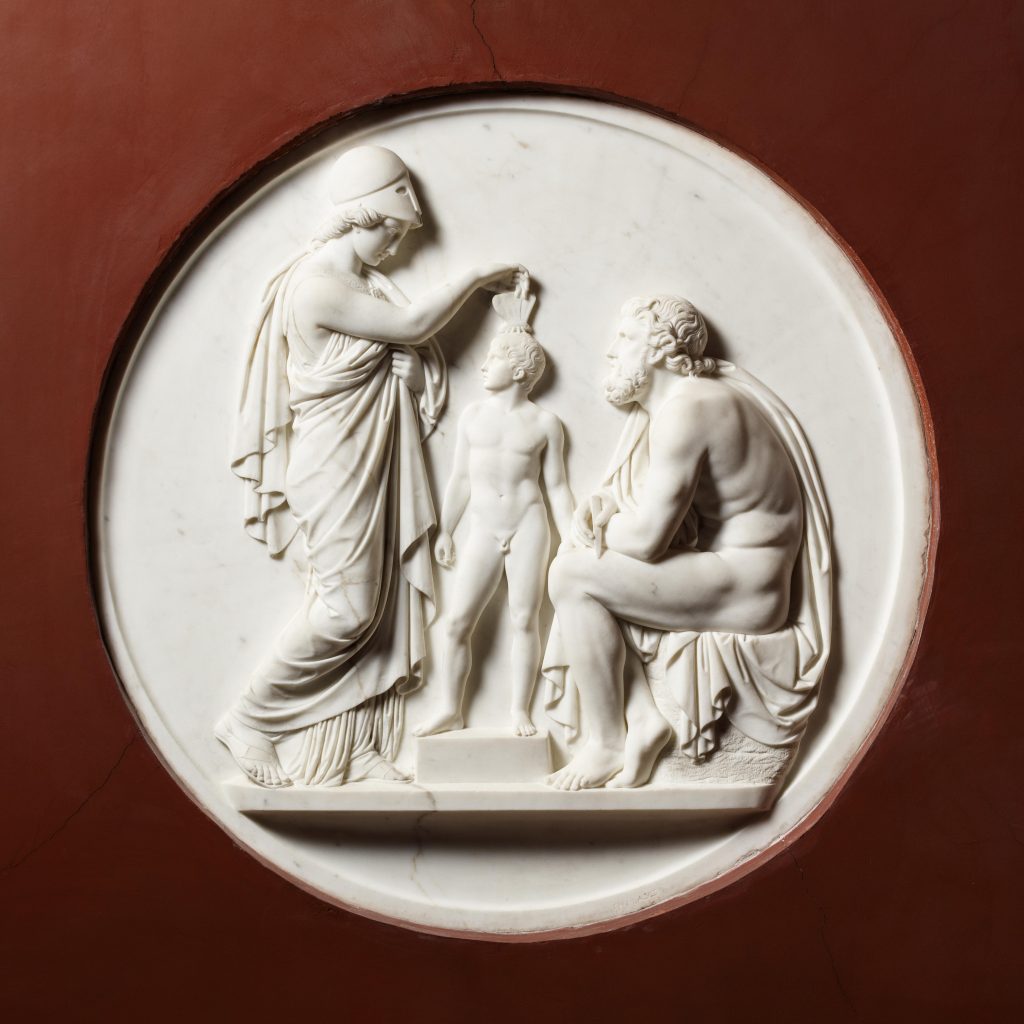
The story continues that although only the gods were meant to have access to it, Prometheus decided he had to give mankind fire. This really annoyed Zeus who designed punishments for both Prometheus and Man. For the former it was a gruesome ritual of having his liver eaten by vultures and regenerating every day for eternity. For the latter, he had another of his sons create a woman of great beauty, Pandora. Zeus gifted her with curiosity and a box (or jar) which he ordered she never open. Which of course she did, so releasing into the world all the horrors which have plagued the world since – pain, sickness, envy, greed. Pandora later did find something left in the box: Hope…
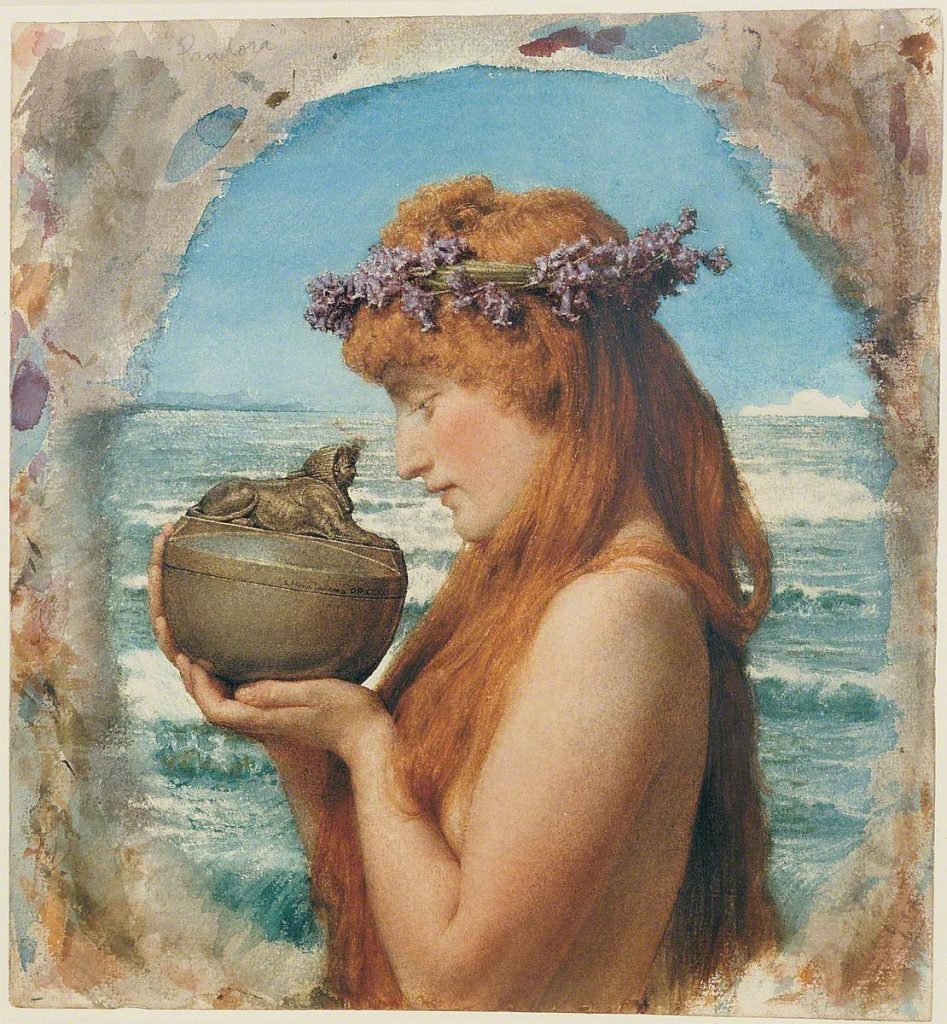
Looking North and Westward towards Scandinavia, with possible origins around 4,500 years ago, the myths of the Old Norse Religion tell of three gods, the divine brothers Odin, Vili and Ve, who create the first man, Askr, and the first woman, Embla, from tree trunks on the seashore, Askr from the ash tree and Embla from the elm. From each creator they received a gift: Odin gave them breath, or life, Vili gave them understanding, and Ve gave them their senses and outward appearance.
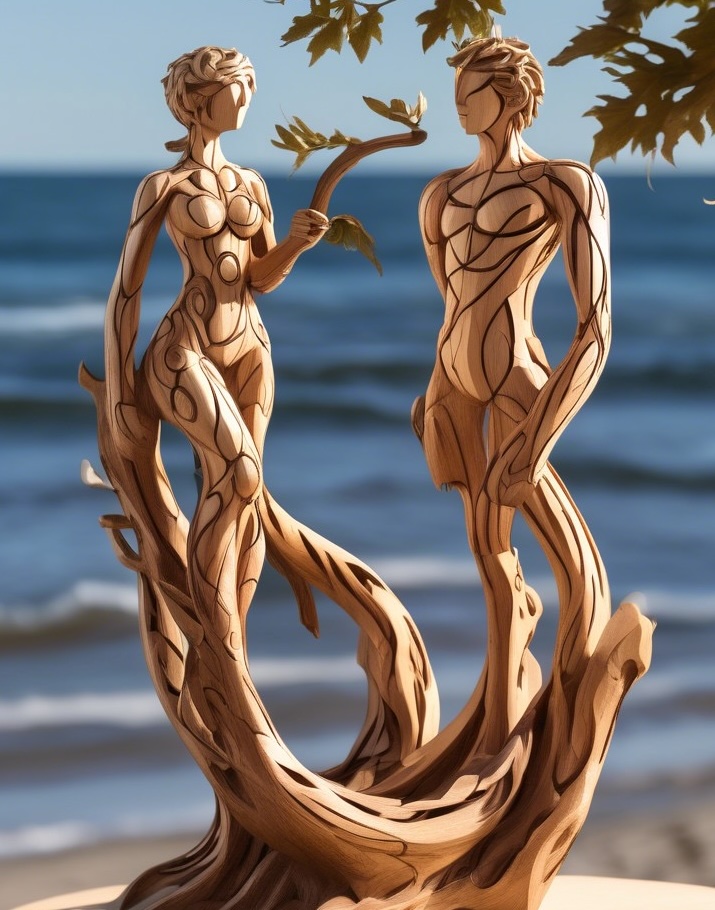
This image of Askr and Embla has inspired a whole diversion of its own, ‘Creation and Creators in the 21st Century‘.
I was unable to find a really good image representing these two primordial figures and capturing the imagery of the story as I understood it so for the first time in my blogging career I set ‘Chatbox’, an iteration of several Artificial Intelligence applications, the task of creating something suitable. It took several attempts to come up with this one. What does it get right? What does it miss? Is this a creation?
On the Eastern shores of the Atlantic Ocean, at the Western-most edge of Europe, the Gaelic speakers of the Outer Hebrides and the Gaeltacht of coastal Ireland are among the few remnants of a Celtic culture which once dominated Europe from Anatolia to the Western Isles of Scotland. Their Druids, the priestly class, forbade the writing down of their religious texts and, according to Julius Caesar, each spent 20 years memorising the secrets and mysteries for oral transmission. So successful were they that, two millennia after their almost complete subjugation by the Romans, it is now impossible to know precisely what they believed.
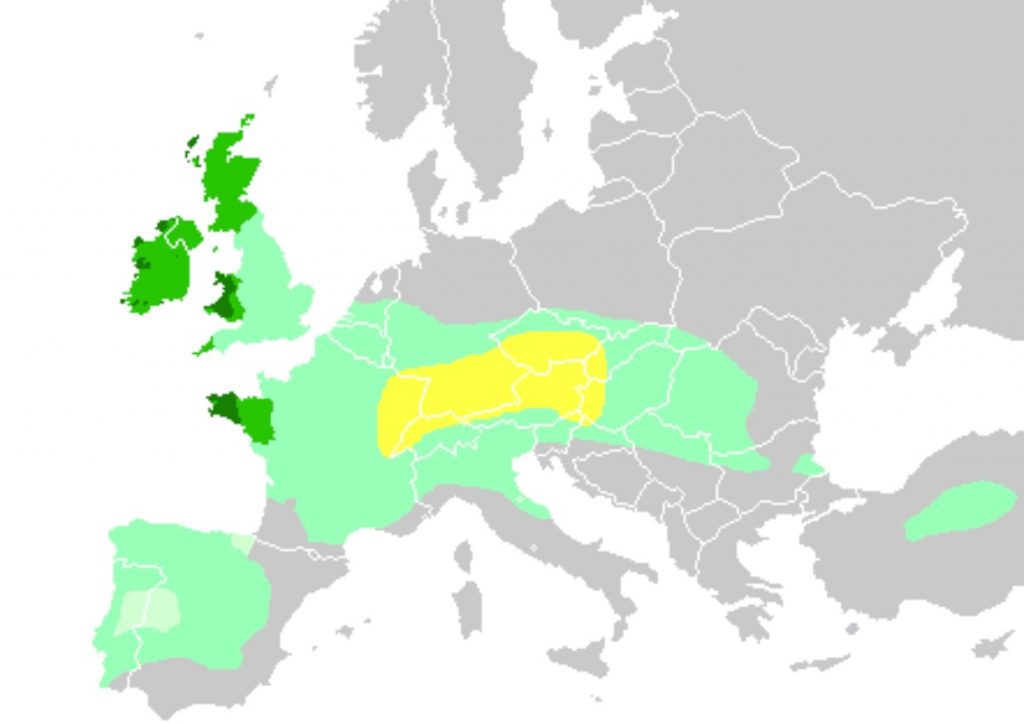
In 2002 a team of researchers from the Gerry Tobin Irish Language School in New York set about re-constructing a version of the lost creation myth of the Celts based on surviving folklore, later writings and other information they had of the Irish Celts.
It all started with Bith who ‘revealed himself’ from the dark sea of emptiness. Bith created Bóchra as a woman and as the ocean and had a number of children with her including the Three Gods of the ‘Tuatha Dé Danann’ whom Bith tasked with creating humanity. And a man and a woman were created out of two yew trees.

Various versions of Celtic mythology are richly populated by goddesses, gods, demons, giants and heroes. Some 300 general and local Celtic gods and goddesses are known of today, from Gaulish (Central and Western Europe), Brythonic (British), Iberian (Spanish) and Gaelic (Scots and Irish) traditions, each of which seem to have evolved their own mythology. So, along with the absence of written records, it is hardly surprising that there are multiple versions of Celtic myths, though some do have one unusual theme in suggesting that Celts were descended from gods, rather than were created.
But all these, and many more, traditions agree on one thing. Humans came into existence in more-or-less the form we see today, either through creation or divine descent.
Next we will cross the Atlantic and then move on round the globe in my search for the story of evolution.
Next: People Pods, Corn and Mud, Mud, Glorious Mud
If you enjoyed reading this Click here to be told of new posts and click on the ‘Feeds and shares…’ section on the right side of the screen.
